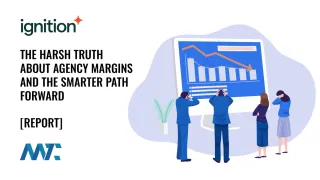How You Value Your Agency Will Define Your Project’s Success

This article was originally published in Forbes.
One of the considerations that agencies often have to navigate is how their prospective clients value an agency’s services. Many clients measure the output productivity (pieces per hour) or the output cost (price per hour) but neither of those takes into consideration the actual results. The real value of marketing or development is the impact on your overall business results and the return on investment.
Before starting my agency, I hired dozens of agencies. I was often discouraged by relationships with organizations that worked on a retainer, so I pushed for fixed pricing. There were several reasons why:
- Budgeting: A flat budget is a lot easier to add as a line item in our annual budget.
- Accountability: It required our staff to plan our initiatives consistently throughout the year. It required the agency to set accurate expectations and be held to them.
- Performance: A flat budget with an agency rewards success, while a retainer rewards billable hours.
- Risk: A flat budget required both my organization and the agency to have skin in the game. If for instance, the agency had to redo work, we did not have to pay for it. If we didn’t adequately provide requirements, we had to reprioritize tasks and put our plan at risk.
- Focus: Instead of being concerned about hours and billing, we can focus on growing key success metrics for building awareness, engagement, and conversion.
If you’re planning to work with an agency and want to optimize your ROI, here are three points to consider.
Focusing On The Wrong Service Metrics
Through the years, we have observed clients’ attention stray and questions arise that are counter to our focus. The first is cost. Other agencies may be offering a subset of the deliverables with a less expensive quote, but the contract cost for us is called an investment because that’s how it performs. Solid investments have a high return; cheap investments rarely do. Our overall costs are typically lower than hiring because our clients can’t replicate our experience nor our efficiency. We can spread the costs of expertise, tools and processes across clients, ensuring a high return on investment.
Clients also ask about how many hours were used or how many hours are left. Time is not a factor in the success of your marketing efforts – business results are. We may have developed a templated product or campaign, which took us months to develop but only take us hours to execute for each client. If we developed a proprietary solution for each client, it could take months. In both of these instances, hours aren’t the variable – the results are.
The worst fixed-budget scenario is that the client changes their mind about the strategy mid-contract. At issue is the upfront research, preparation, and strategy development that’s been executed. Results may not be realized and the client wants to shift strategies. The problem is that it’s not a shift; it’s a restart. While we’re agile to ensure client success, a rebranding or pivot can render all previous efforts useless and the client’s expectations of success haven’t changed. Both success and profitability require momentum, so changing direction is destructive to both parties.
Your Agency Is A Partner
You may not realize it initially, but you’re not hiring an agency; you’re partnering with one. While you are qualifying our ability to get results, we’re qualifying you to ensure the relationship will be productive.
Value is dynamic, not static over the duration of an engagement and even beyond. Over time, clients see the cost per lead drop and the number of leads increase, and that momentum enables the agency to readjust the strategy and continue optimization.
In a perfect scenario, both grow in profitability over the duration of the relationship. Here’s what it looks like: In the first few months, there’s virtually no return on investment despite our efforts. In the next few months, clients are excited to see the trends start to take shape. By the end of the year, success leads to renewal. Subsequent years are spent growing through additional strategies like public relations, paid advertising, video marketing, or even mobile app development.
Your Investment Doesn’t End With The Contract
If a client leaves after the first year, they’ll continue to reap the benefits of our efforts. One example of what an agency like ours might do for a client is research keywords that are driving conversions and popularity amongst their competitors. We may institute a strategy that incorporates optimization on their site and a dedicated, ranked page. That page’s popularity grows through the use of infographics and/or videos. Perhaps we have an additional offer for a white paper to entice contact with the sales team.
As the infographic and white paper are discussed and shared, promoted socially, and establish a presence in the industry, the landing page continues to increase ranking on highly competitive keywords that drive conversions. If the client pauses their engagement with us or leaves us altogether, those leads aren’t cut off. Unlike paid advertising campaigns, high-performing inbound strategies will continue to drive value long after we’re gone.
Keep your eye on the prize when it comes to working with your agency. How much are you spending per year? How much has your business grown from the strategy your agency executed?
There’s your return on investment.







